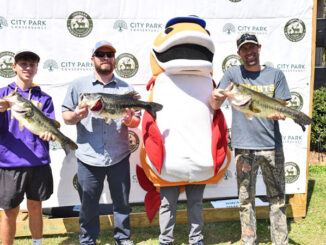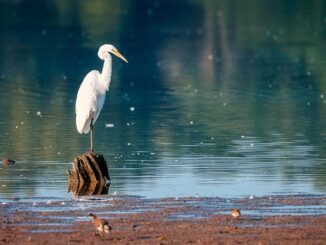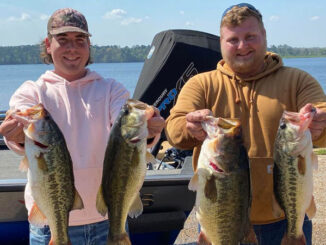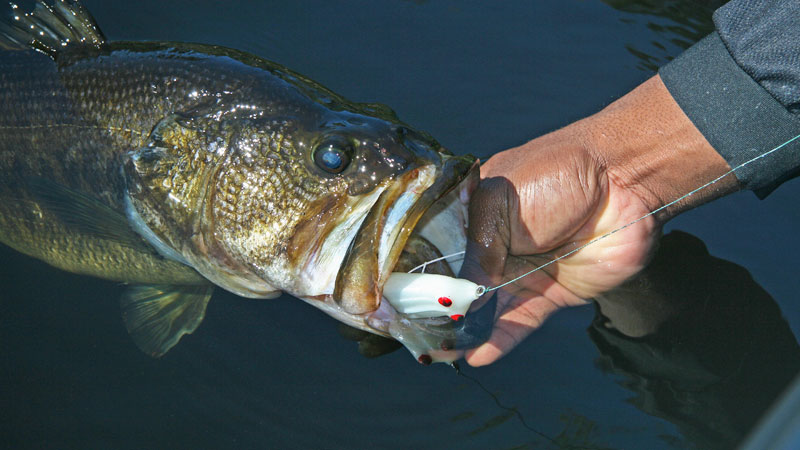
Try this great search bait
Spring brings several promises, among them: bass will eat a frog. With fish shaking off winter’s chill and moving toward their spawning locations, gobbling as much protein as possible is paramount.
For an angler, the frog offers a great search bait for covering lots of water and finding key staging areas. Once you’re dialed in, the frog is an easy bait with which to hit your targets.
Make the most of this high-percentage bait by paying attention to these key points.
Body styles
No need to complicate this; a traditional, narrow-nose frog comes through cover best and does the best job of creating taunting displays with its subtle side-to-side twitches. When noise and splash weigh heavier in the priorities, a popping frog’s concave face chugs, spits and produces a substantial bubble trail. A walking frog needs relatively calm conditions for open-water use, while poppers perform just fine in a chop.
Specialized frogs with baitfish/panfish shapes designed to ride sideways in the water enhance the basic frog image with a forage fish ruse.
Colors
Modern frog colors run the gamut from authentic bullfrog, to more eye-popping artistic options. Matching local forage can make a difference, so take note of any live frogs you spot and do your best to mimic their appearance.
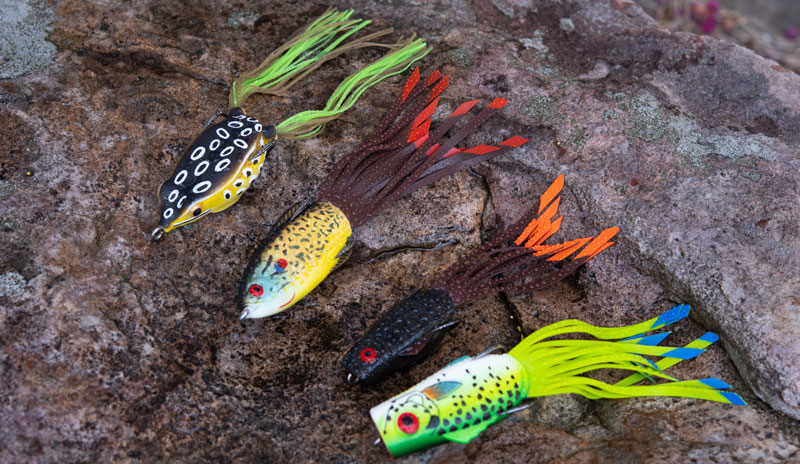
Blacks and browns do remarkably well, but savvy anglers know that one of the most popular frog colors is white. Some say it looks like a baitfish belly from the viewpoint of a bass, but in thick weeds or dim light, anglers can visually track a white frog better. Sometimes bass quietly suck down a frog, so when the white disappears, it’s time to get ready to hit him.
Leg work
Most frogs come standard with a set of long leg strands and, at times, this is what you want. For example, a bass may have trouble eyeballing a clean shot at your bait through a grass mat; but if he grabs those long legs, he has a better chance of sucking in the entire frog.
Conversely, when a frog’s legs drag too much in open water, this may impede the walking motion. In such cases, trim a quarter-inch at a time until you find the right length for optimal action.
For strategic effect, trim one side a half-inch shorter to make the bait swing more widely to the longer side. On the subsequent swing, that fuller side holds the frog to a shorter swing. Often, a small difference between your frog and others can be the deal closer on a pressured fishery.
Open up
If you’re missing too many frog bites or your fish keep shaking loose, bend the hooks outward for a wider grabbing range. In heavier cover, this broader reach obviously works against you, so keep the hooks tucked close to the frog’s body and check the alignment after every fish.
Fill the belly
Enhancing your frog with rattles (additional) can help you attract attention from afar. Simply remove the skirt legs, push rattle chambers through the holes and replace the legs. Also, adding lead BBs to a frog’s belly makes it sit lower in the water — often advantageous when working over grass mats.
Presentation prowess
Overhead casts are the norm, but sidearm shots help you hit those shade pockets created by overhanging tree limbs, vines, etc. Sidearm casts will also serve you well for dock fishing when skipping your frog into the dark-and-dangerous.
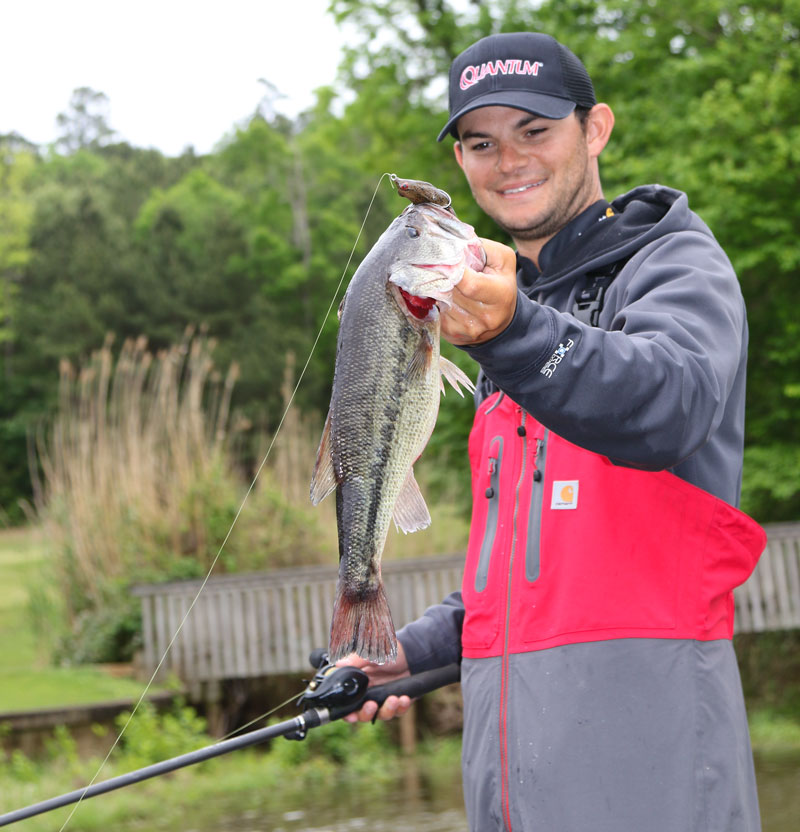
Additionally, we typically associate the pitching presentation with jigs and Texas-rigged plastics, but this delivery style can also work well when you’re sending your frog into a tight area.
The right response
You can chose a goofy colored frog, throw one with raggedy legs and even work it home with a boring, straight line retrieve and still attract a bass. Right place, right time — it happens. However, regardless of how you tempted a fish into biting, this is without question the most important element of the game.
Truly a make-it-or-break-it moment, the proper hookset for a topwater frog bite requires a discipline that’s often greatly impeded by the magnitude of the moment. You make your cast, work the bait, twitch-twitch-twitch-twitch-twitch-BOOM! Big splash, muscles clinch, eye widen; but what do you do?
Nothing — at least not for a second or two. Fact is, the majority of missed frog bites are not the fish’s fault. Sure, they miss the bait sometimes, but anglers yank away their target more often than not. It’s completely understandable, but the sooner you can train yourself to forego that immediate rod yank and simply let the fish come tight on your line before crossing his eyes, the more frog fish you’re going to catch.
